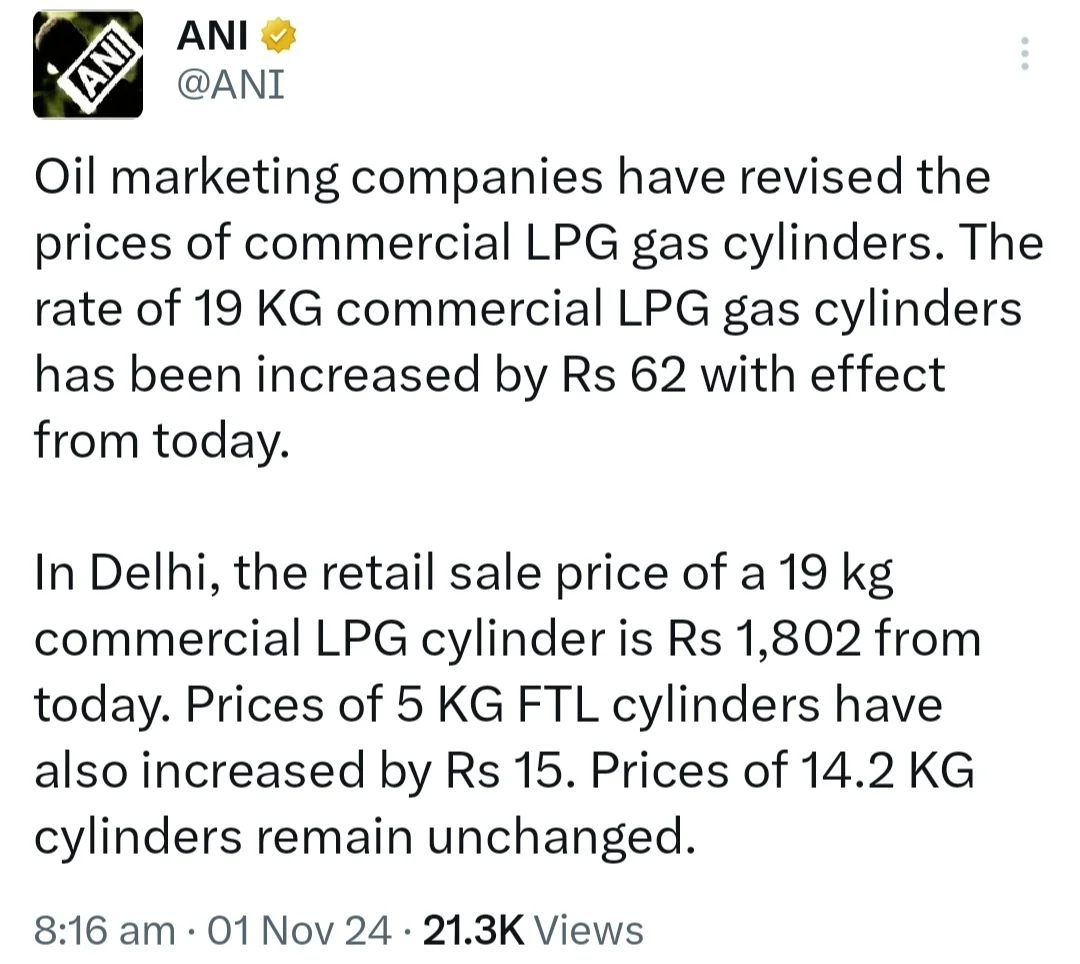Oil marketing companies have announced a price increase for LPG, effective from the first of the month. This hike includes a rise in the cost of commercial LPG cylinders. Additionally, jet fuel prices have also seen an uptick.
In India, the price of a 19 kg commercial LPG cylinder has increased by Rs 62. This adjustment brings the cost in Mumbai to Rs 1,754.50, while in Delhi, the price now stands at Rs 1,802.

Oil marketing companies have implemented a price increase for commercial LPG cylinders for the third consecutive month, reflecting ongoing market pressures and adjustments. On October 1, 2023, prices rose by Rs 48.50, following similar increases in August and September. This trend underscores a broader context of rising fuel costs, which can significantly impact both consumers and businesses.
The most recent price adjustment, effective from November 1, has seen a further increase of Rs 62 for a 19 kg commercial LPG cylinder. This means that the price in Mumbai has reached Rs 1,754.50, while in the national capital of Delhi, it now stands at Rs 1,802. These increases highlight the volatility in the energy market, with oil companies like Hindustan Petroleum Corporation Limited (HPCL), Bharat Petroleum Corporation Limited (BPCL), and Indian Oil Corporation Limited (IOCL) directly influencing these changes.
While commercial LPG prices have been on the rise, it’s noteworthy that there has been no change in the prices of domestic LPG cylinders. This distinction is important for households that rely on subsidized domestic cylinders for their cooking needs. The difference in pricing between commercial and domestic LPG can create confusion, as consumers may not fully understand the implications of these adjustments.
The recent increase in jet fuel prices is another factor to consider. As the cost of aviation fuel rises, airline companies may have to pass on these expenses to customers, potentially leading to higher ticket prices for air travel. This could deter some travelers, particularly those on tight budgets, and impact overall demand in the aviation sector.
In addition to these price hikes, the geographical disparity in LPG prices remains significant. Currently, the 19 kg LPG cylinder is the most expensive in Chennai, while it is priced lower in Mumbai. This inconsistency can be attributed to various factors, including transportation costs, local taxes, and regional demand. For businesses that rely heavily on commercial LPG, such as restaurants and catering services, these price fluctuations can significantly affect operating costs and profitability.
Moreover, the impact of these price increases is not limited to just the energy sector. As fuel prices rise, consumers often see a ripple effect across various industries. For instance, food prices may increase as restaurants and food producers pass on their higher operational costs to customers. This can lead to inflationary pressures in the economy, affecting overall consumer spending.
In summary, the ongoing increases in commercial LPG cylinder prices highlight the challenges facing the oil and gas sector amid fluctuating global markets. With the latest hike, consumers and businesses alike are feeling the pinch, particularly as the winter season approaches and demand for heating and cooking fuels typically rises. The aviation sector is also bracing for potential repercussions as jet fuel costs escalate.
For consumers, understanding the nuances of these price changes is crucial. Keeping an eye on future trends in both LPG and aviation fuel prices will be essential for budgeting and planning, especially for those who rely on these essential services. As the situation develops, stakeholders across industries will need to navigate these challenges carefully to mitigate the impact on consumers and maintain operational viability.

